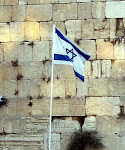By Hana Levi Julian
While Israeli tourism to Turkey is dying on the vine, the Republic of Malta is preparing to introduce a new direct flight route to the Jewish State. The small
 Mediterranean nation, located near Italy, has lost no time taking advantage of the drop in Israeli travelers who are choosing Turkey as their destination of choice.
Mediterranean nation, located near Italy, has lost no time taking advantage of the drop in Israeli travelers who are choosing Turkey as their destination of choice.The General Retailers and Traders Union (GRTU), the Small and Medium Enterprises (SMEs) Chamber, and the Malta Hotels and Restaurants Association (MHRA) banded together recently to advocate routes to both Jerusalem and Beirut. Some of those involved suggested that it would be a good idea to connect the two destinations.
The GRTU "has been inundated with requests and queries" as to why airlines do not start flight operations from Malta to Jerusalem and Beirut and back, Philip Fenech, president of the GRTU's Tourism, Hospitality and Leisure section, told The Malta Independent. “A number of Maltese, with their strong Catholic faith, have always shown a high interest in traveling to these two places,” he explained.
MHRA president George Micallef added that tour operators have had especially positive experiences from Israel, leading him to be certain that there is money to be made on both sides. “The MHRA has in the past experienced charter operations from these two destinations, particularly Israel, and we have generally received positive feedback from the hotels that have hosted a large number of guests from these countries, said MHRA president George Micallef.
He cautioned, however, that it was important to ensure that the momentum of high energy seen during peak months be continued during off-peak season as well. Otherwise, he said, “it can create more problems than solutions. When introducing new and prospective destinations like Jerusalem and Beirut, Malta needs to ensure their sustainability,” he said.
Malta, a member of the United Nations and the European Union, is comprised of an archipelago some 93 kilometers south of Sicily and 288 kilometers northeast of Tunisia. The republic spans some 300 square kilometers, making it one of Europe's smallest and most densely populated countries. Its official religion is Catholicism.
















